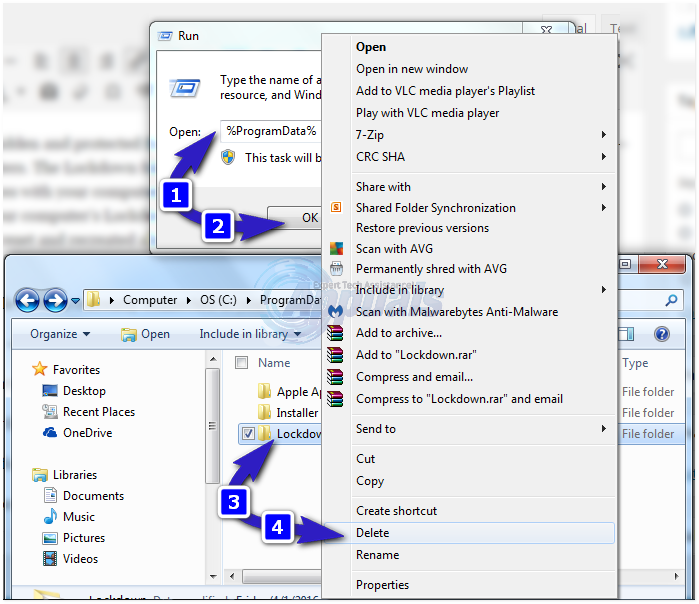SOLVED: Error 0xe8000003 on iTunes when connecting iPod/iPad/iPhone
iTunes is the official computer suite for all devices Apple. That being the case, iTunes is not only available for Apple computers but can also be installed and used on computers running on the Windows Operating System. On Windows, when iTunes fails to connect to an Apple device because of an unknown error, it displays an error message containing an error code that begins with “0xe”. When iTunes fails to connect to an Apple Device due to an unknown error, it displays error code “0xe8000003”. This error code is accompanied by the following error message:
“iTunes could not connect to this iPhone / iPod or iPad because an unknown error occurred.”

In some cases, restarting a Windows computer affected by this problem gets iTunes to successfully connect to the Apple Device. However, the real problem begins when a simple restart does not fix this issue. If you were not able to resolve this problem by restarting your Windows computer, the following are the two solutions that have proven to be the most effective against this problem:
Solution 1: Reset your Lockdown folder
The Lockdown folder is a hidden and protected folder present on all computers that have iTunes installed on them – including Windows computers. The Lockdown folder contains all kinds of temporary data, mostly pertaining to the syncing of your Apple devices with your computer’s iTunes. A solution to this issue that works for many people affected by it is resetting your computer’s Lockdown folder by deleting it. Don’t worry – once you delete the Lockdown folder, it will be reset and recreated almost immediately. To use this solution to try and get rid of this problem, you need to:
- Disconnect any and all Apple devices currently connected to your computer. Quit
- Press Windows Logo key + R to open a Run
- Type %ProgramData% into the Run dialog and press Enter:
- Locate and double-click on the folder titled Apple to open it.
- Locate and right-click on a folder named Lockdown.
- Click on Delete in the contextual menu.

- Confirm the action in the resulting popup.
- Restart your computer and check to see whether or not the problem has been fixed.
Solution 2: Uninstall iTunes and all of its components and then reinstall it
If Solution 1 did not work for you, there is another highly effective solution that you can use – uninstall iTunes and all of its components and then reinstall it. Uninstalling and reinstalling iTunes, as tedious a process as it can prove to be has managed to fix this issue for the majority of iTunes users who have been affected by it. However, it should be noted that you can’t simply uninstall iTunes by navigating to add or remove programs in the Control Panel and uninstall it. You are going to have to perform quite a few steps in a specific order in order to successfully and completely uninstall iTunes from your computer so that it can be reinstalled from scratch.
Phase 1: Uninstalling iTunes and related components
- Hold the Windows Key and Press R. Type appwiz.cpl and Click OK.
- From the list of programs installed on your computer, one by one in the exact same order in which they are listed, right-click on the following programs, click on Uninstall and go through the uninstallation wizard:
- iTunes
- Apple Software Update
- Apple Mobile Device Support
- Bonjour
- Apple Application Support 32-bit (if present)
- Apple Application Support 64-bit (is present)
- iCloud
Restart your computer afterward and check to see if the issue persists.
Phase 2: Making sure that iTunes and related components did not leave behind any files
- Press Windows Logo key + R to open a Run
- Type %ProgramFiles% into the Run dialog and press Enter.
- One by one, locate and right-click on the following folders (if they exist), click on Delete and confirm the action:
- iTunes
- Bonjour
- iPod
- After this, Double-click on the Common Files folder to open it.
- Double-click on the Apple folder to open it.
- One by one, locate and right-click on the following folders (if they exist), click on Delete and confirm the action:
- Mobile Device Support
- Apple Application Support
- CoreFP
Note: If your computer is running on a 64-bit version of Windows, you are going to have to repeat steps 3-6 in the Program Files (x86) folder located in the partition of your hard drive which houses your Windows installation (in most cases, this partition is Local Disk C).
- Go to your desktop, right-click on the Recycle Bin, click on Empty Recycle Bin in the contextual menu and confirm the action in the resulting popup.
- Restart your computer.
Phase 3: Reinstalling iTunes
Once you’re done with phases 1 and 2, you will have successfully and completely removed all traces of iTunes and its related components from your computer. To download the installer for the latest version of iTunes, click here and, when the website loads, click on the download the latest version link. On the next page, click on the Download now button and your download should begin. Once you have downloaded the installer for the latest version of iTunes, launch it (by navigating to and double-clicking on it) and go through the iTunes installation wizard right up to the very end. After the installation of iTunes, you should no longer be met with error code 0xe8000003 whenever you try to connect your iPhone to your Windows computer.